Do you Differentiate in your Spanish classes? Lesson ideas for Spanish teachers!
Differentiated Instruction has been a hot topic at teacher workshops and conferences for several years because it´s a great solution to teach the multiple levels of understanding that take place within each mix of students you have throughout the day.

One way to add Differentiated Instruction to your Spanish lessons is to set up “Stations” for a particular topic or unit and allow students to work through the activities at their own pace.
In an effort to add student options and help them learn responsibility for their own learning, I’ve created several units that can be used as Differentiated Instruction Stations.
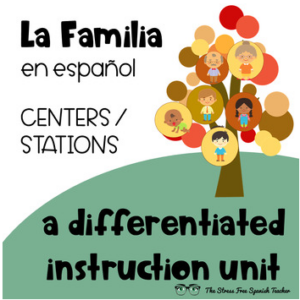
Stations are physical learning locations set up in your classroom. Each location focuses on a specific area (or modality) of learning.
Classroom Set up:
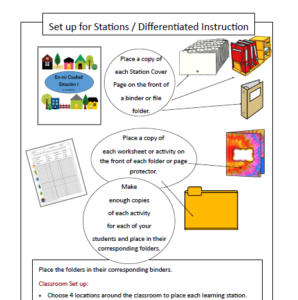
Students are given a checklist of activities that they are required to do and move from station to station to complete each task. Why does this work so well?? Because students can take charge of their own learning!
Here’s what one teacher had to say about these stations:
“This was PERFECTO while I had a sub for 2 days!
I walked the students through it the day prior so they knew exactly what to do with the Substitute! He said all my classes were on-task and great!”
The Stations for La Familia en Espanol are divided into 4 stations:
1. Vocabulario – students learn the new vocabulary and do a variety of practice activities to familiarize themselves with their new family words and to help them memorize the new vocabulary.
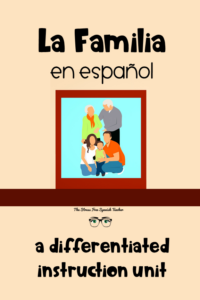
2. Speaking & Listening – students practice using their new vocabulary aloud as they participate in Communicative Activities with a partner (or partners).
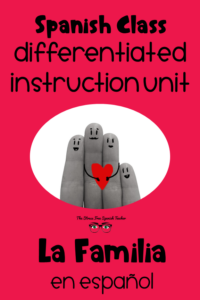
3. Reading & Comprehension – students practice their understanding by reading several texts and answering questions about what they have read. Students also read a story and retell the story cartoon style in speech bubbles.
4. Project Based Assessment – students choose a project to demonstrate their understanding of what they have learned.
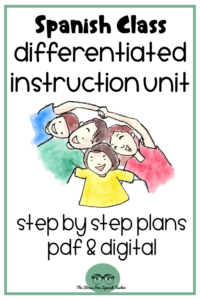
I’m so pleased that teachers across the U.S. are enjoying these Stations activities and letting me know!
Here’s what another teacher had to say:
“This looks fantastic! I’ve never used stations before in my classes, but these activities are so creative and thorough that I’m looking forward to giving it a shot! Thanks for a great resource! 🙂 ”
And just one more. 😉
“Great activities – I admit I’ve never tried stations before and the kids loved them! ”
I hope you’ll head over to my TeachersPayTeachers store and take a look for yourself! Make sure to check out the free preview and take a look at everything included in this Stations packet. And if you do purchase and use this packet, I would LOVE to know how the activities worked out for you with your students!!
Enjoy!
Read about the “Around Town, In the City” Differentiated Instruction Stations Packet here!



